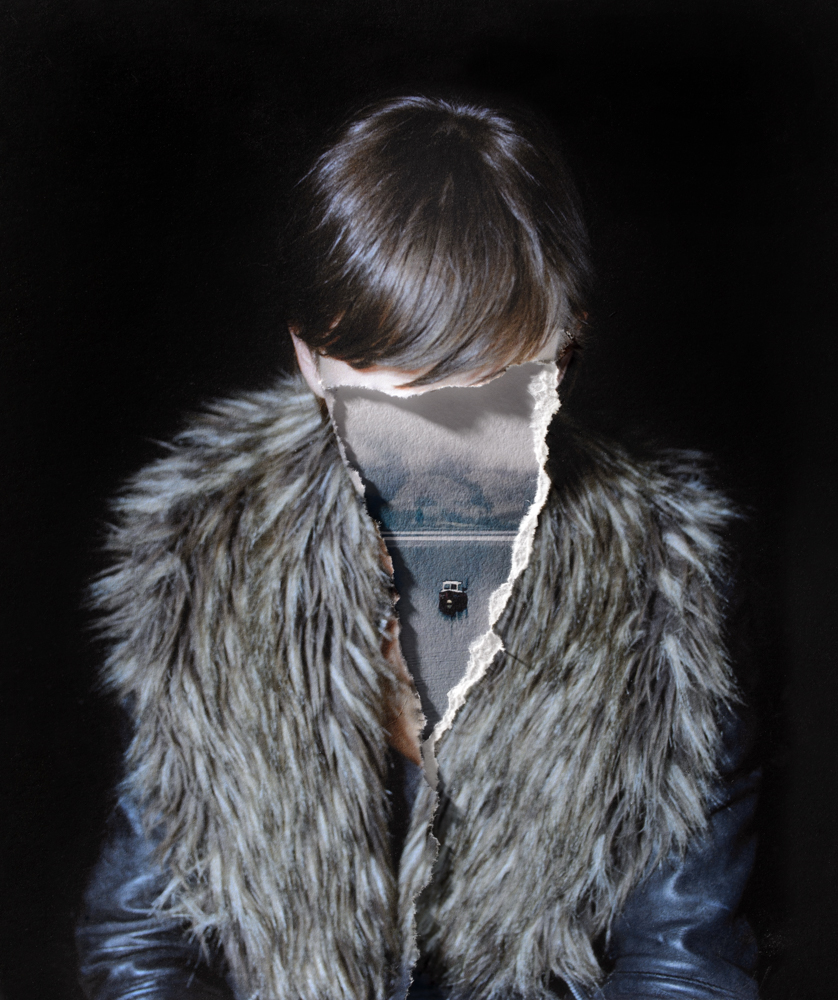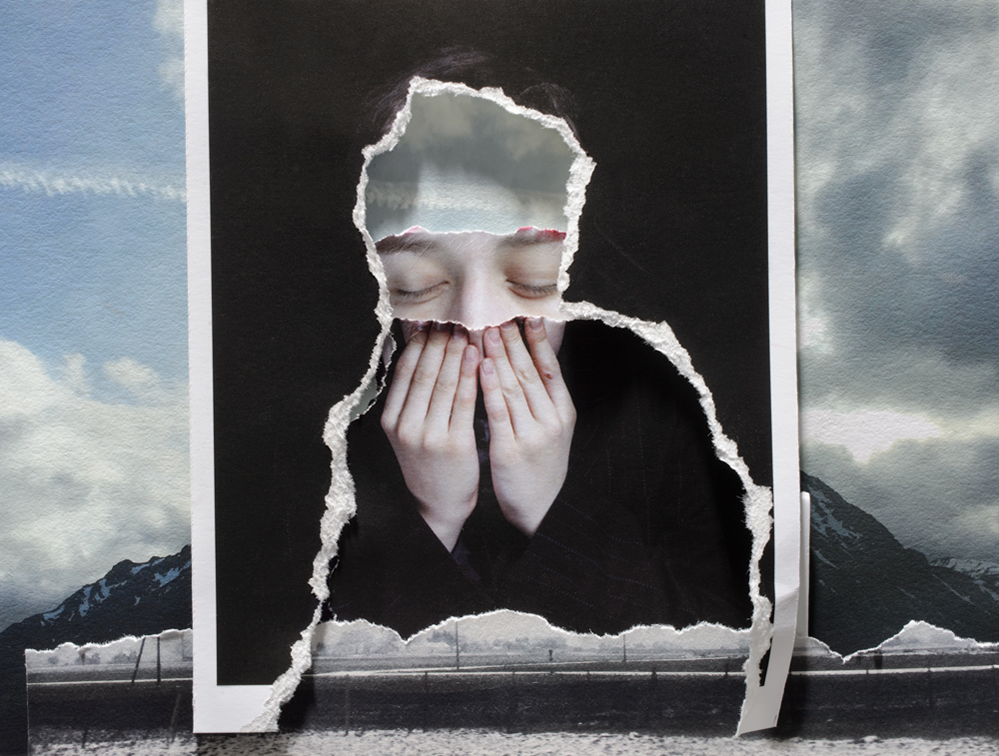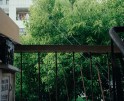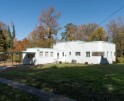Sylwia Kowalczyk: Lethe
Projects featured this week were selected from our most recent call-for-submissions. I was able to interview each of these artists to gain further insight into the bodies of work they shared. Today, we are looking at the series Lethe by Sylwia Kowalczyk.
Sylwia Kowalczyk was born in Lublin, Poland and studied graphic design and photography at Krakow Academy of Fine Arts, ESAG Paris and the Edinburgh College of Art (MFA in Photography). Her work looks at using optical illusions to create an ambiguity about what is real and what isn’t and is always using analogue trompes-oeils to look at memory, identity, fear, illusion and distortion.
Sylwia’s photographs were part of reGeneration2 that showcased the most promising 80 young photographers in the world (published as a book by Thames and Hudson and Aperture Foundation) and ‘Lethe’ won PDN Photo Annual in ‘Personal’ category and was shortlisted for The Renaissance Photography Prize in the UK. The series was presented to international audiences during several solo shows, most prominently in Blue Sky Gallery in Portland, US, during Month of Photography in Bratislava, Slovakia, Summerhall in Edinburgh, UK and most recently in Pictura Gallery in Bloomington, US.
Sylwia lives and works in Edinburgh.
Lethe
Lethe is the river that cleanses Dante in Purgatory, that wipes the memories of the dead as they drink from it or bathe in it. As important recollections slip from our memory, this loss brings its own kind of grief, the pain of not being able to bring back a recollection of a familiar face or a gesture. To bathe in Lethe brings grief, the numbness of oblivion, and a rebirth which Sylvia Plath described as stepping up from ‘the black car of Lethe, Pure as a baby’.
The finite number of neurons in our brain means that these need to be assigned to other memories as we construct our narrative. Also the memories play tricks on us. The past is not a faithful record, it is a mythology, a vast, blank territory where even the most important memories in life are gradually erased – if we do not remember them, perhaps these might not as well happened in the first place?
‘Lethe’ is a collection of collages, portraits and created from my own archival images these loose prints grow into new entities.
Daniel George: On your website, you write that this project emerged in the wake of a difficult experience. Would you mind sharing how this event then became the impetus for Lethe?
Sylwia Kowalczyk: My family had a tough year that year that the work was created – my mother in law was diagnosed with a brain tumour and her health quickly deteriorated. Our life was held captive between multiple hospital visits and helping out my elderly father in law who suddenly had to cope on his own without his partner of 60+ years together. All this while running our own freelance business and taking care of our teenage children in a different town. Everything went upside down.
Suddenly I was not able to control anything, a phonecall that someone was taken to hospital could come any minute at any time of the day or night. We were actually just packing to go to the airport to attend photography festival in Arles for a couple of days when we were summoned to hospital at 3 am – my mother in law, who was feeling much better on her new medication, suddenly went into coma and died that very night.
She was a fantastic lady and this sudden loss was not dissimilar to the loss of my father when I was very young (he died of cancer, just a couple of weeks after the diagnosis). Perhaps I never processed that grief, until now.
I suppose it is an experience many people can relate to – the old world ceases to exist and nothing will be the same again, yet we have to roll with it, life goes on. Olivia Laing describes it way better than I ever could: ‘It isn’t academic, art. it’s about emergency exits and impromptu arrivals, things coming and going through the ghastly space where a person once was.”
DG: Did you find that making this work helped you further process this experience and your emotions? In what ways?
SK: ‘Lethe’ is very different from a very controlled, studio environment of my previous work. I basically created all the collages in two sittings, having the idea brewing in my head for many months. I just need a release and I needed to see if it worked how I imagined it. So I printed the images from my own archive on my studio printer and started assembling the scraps of paper together.
‘Lethe’ was a big experiment in letting go. I just needed a catalyst. The process of tearing the prints was like a therapy.
DG: I am drawn to the ways in which you use layering in your photographs—not only in this project, but previously completed series, as well. Could you talk more about your process and interest in using paper, projection, and other materials to assemble your images?
SK: We often convey our memories in collected objects, holiday snaps, inherited items. Utterly meaningless to others, they often contain a world of meaning to us and when placed in a specific environment, these object trigger hidden relevance and also are key to enabling the dialogue with other ‘collectors’.
The textured paper that the original images are printed on and then torn to smaller pieces has a significant role in a tactile feel of the pieces and then in creating a subconscious response of the viewer. Also, all the included photos come from my own archive or were specifically created to be included in a particular piece.
Tearing through printed images and assembling them in new entities is a process not dissimilar to a trance. The urge to become a machine-like is something that the Surrealists experienced in their practice as a promise of objectivity. The whole process of creation toggles between a healing process and a very controlled creation of a visual narrative within a studio environment.
20 years after my photographic debut I returned to projections again but now I’m also mixing these with paper prints in a new series. The images are not only physical projections, but also projections in the sense that the word is used by psychologists – projecting our own self-image onto the world around us.
DG: In your photographs, we are seeing both literal and figurative constructions, and I am fascinated by the relationships created between people and places. Do you have specific narratives in mind when you make these? Or do you intend for the viewer to bring their own interpretations based on memory and experiences?
SK: Each of my photographic projects talks about a different issue in my life. ‘Chicas’ is about becoming an adult woman, not being a girl any more, getting into serious aspects of life – marriage, motherhood, responsibility; ‘Nightwatching’ is a about a fear of loosing an eyesight which actually happened to me and coping with a psychological pressure of an impending doom. ‘Temporal Portraits’ is about meeting people from a very different culture than my own. I got married, I moved to Scotland, I stopped teaching photography and started my postgraduate degree in Edinburgh College of Art. So I guess it is a very personal journey but at the same time I hear that many people relate to my experiences (well, hopefully not to the going blind one! but rather to the sense of fear that at any given moment something might go very very wrong in our lives). It seems I don’t really do happy subjects, which is my Polish side and the acquired Scottish one is fighting with it to the sound of a jolly fiddle tune!
The idea behind using the three-dimensional torn pieces of a thick paper which are later assembled and reproduced on the same textured paper creates the illusion of a tactile, multidimensional object. I could not make it to the opening of a group show in Glasgow where ‘Lethe’ was shown for the first time to the Scottish audience and friends were reporting spotting people who were trying to secretly touch the surface of prints as they thought these surely would be three-dimensional, the reaction that I find fascinating. Also the large scale of these tactile pieces of paper invites the viewer in to participating, even sharing their own emotional response. They create a dialogue with the viewer on what is real and what is unreal.
Posts on Lenscratch may not be reproduced without the permission of the Lenscratch staff and the photographer.
Recommended
-
Earth Month Photographers on Photographers: Josh Hobson in Conversation with Kes EfstathiouApril 19th, 2024
-
Earth Month Photographers on Photographers: Leonor Jurado in Conversation with Jessica HaysApril 18th, 2024
-
Ruotong Guan: Falling. Slowly. but,April 13th, 2024
-
Seth Adam Cook: As Big As The SkyApril 12th, 2024
-
Michael Borowski: AzurestApril 11th, 2024




























































